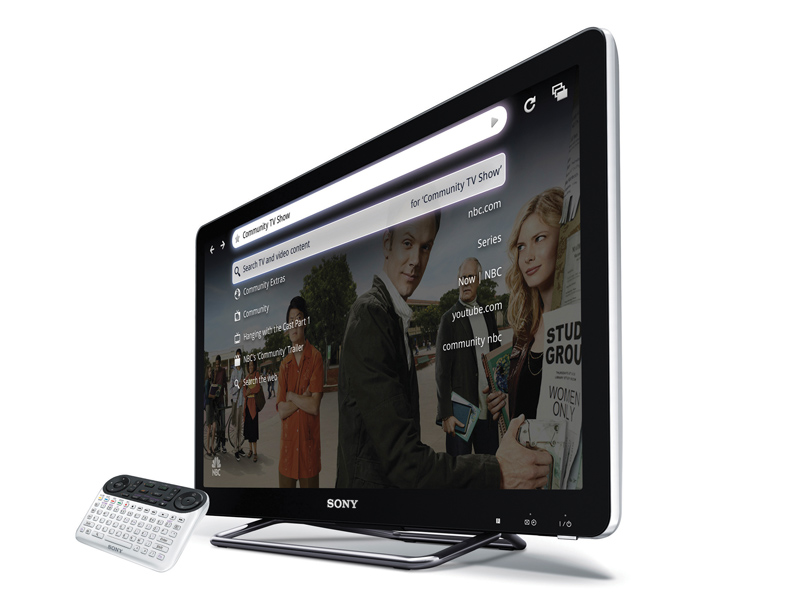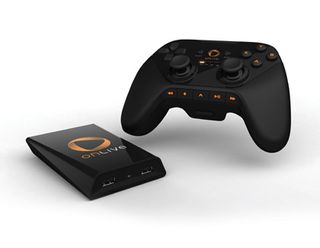
Technology changes so quickly, it's hard to remember how bad we used to have it. UK internet access didn't really take off until Freeserve launched in 1998, few of us had broadband before 2001 and the UK didn't even have a 3G mobile phone network until 2003.
Google was founded in 1998, Facebook and Flickr in 2004, YouTube in 2005 and Twitter in 2006. It's impossible to imagine life without them now, and the pace shows no sign of slowing down.
The internet we'll have in 2020 will look almost nothing like the one we have in 2011, from the information we access to the devices we use to connect. Can we predict exactly what it's going to look like?
Almost certainly not, but we can see the seeds of it even now, and work out a few of the directions the industry will have to travel down to make it happen.
At the back end
If you think the internet is busy now, think again. The current internet population of 1.7 billion is expected to exceed five billion by 2020 - and we're not talking about people. Everything from televisions to old favourite the internet fridge will be hooked up.
At the moment that's impossible, simply because we need many, many more IP (internet protocol) addresses than the current IPv4 system allows. IPv4 has room for four billion IP addresses, and according to internet co-creator and Google evangelist Vint Cerf we'll use up the last ones in the spring of 2011.
Get the best Black Friday deals direct to your inbox, plus news, reviews, and more.
Sign up to be the first to know about unmissable Black Friday deals on top tech, plus get all your favorite TechRadar content.
The new IPv6 standard has capacity for "340 trillion, trillion, trillion" unique IP addresses, Cerf says, "so the theory is we won't run out, at least until after I'm dead".
The move to IPv6 is crucial for several reasons. In addition to freeing up lots of internet addresses, it also improves network security and makes routers' lives easier. Unfortunately, it isn't backwards compatible with IPv4, so networks running IPv6 won't be able to talk to networks running the older protocol. Desktops, smartphones, laptops and routers generally support IPv6, but many ISPs and business networks haven't switched to it yet.
To address the issue, 6UK is raising awareness of the looming crisis and urging businesses to act. "The biggest set of changes in the history of the internet [is] happening today," Cerf explains. "The change in the address space, the change in domain name languages, the introduction of digital signatures in the domain name system, the introduction of end-to-end cryptography in accessing internet-based services. This is a huge change in the net."
The arrival of cloud computing has enabled us to outsource storage and applications to distant servers, and the trend won't just continue, but accelerate: Gartner Research predicts that by 2012, cloud computing will have become so pervasive that one in five businesses won't own a single IT asset.
Moving to the cloud
Our email, images and our work documents are often in the cloud already, and entertainment will follow in their footsteps.
Video on demand services are ten-a-penny online, but streaming, not downloading, seems to be the technology of the future: it's the solution used by Netflix in the US and iPlayer here, and Apple is widely expected to unveil a streaming version of iTunes soon (which would explain why it's building a billion-dollar data centre in North Carolina). Buying something online will increasingly mean buying access to it, with no direct ownership at all.
Gaming may move to the cloud too. A service called OnLive promises console quality games with minimal hardware by doing the processing in its data centres and streaming the results to a tiny 'micro-console'.

STREAMING GAMES: OnLive promises to deliver console-quality gaming with the processing performed remotely
OnLive is a serious company - it boasts 200 employees, and its investors include Warner Bros and BT. It's available now in the US and looks set to grow quickly.
Cloud computing will be particularly important as smartphones and other mobile devices become the platforms of choice for most of our online activities. Phones don't yet have the power or storage necessary for desktop-calibre applications, so the emerging model is what Microsoft calls 'three screens'.
Three screens
As Steve Ballmer explains it, this is "an experience that spans the PC, the phone, the TV and the cloud". Rather than store your entire computing world on a desktop PC, you store it in the cloud and then access it on whatever device happens to be handy.
There are some things that a big desktop will almost certainly always do better than a smartphone, including data input, but there's no reason why the app has to be installed or data isolated to its own hard drive. With smartphones expected to outsell PCs by 2013 and Google's cloud-based OS Chrome on the horizon, cloud computing is going to be very important in the coming decade.
According to the Pew Internet and American Life Project, by 2020 most people can expect to "access software applications online and share and access information through the use of remote server networks, rather than depending primarily on tools and information housed on their individual, personal computers." It's all very exciting, unless you're an ISP.
Our appetite for online video is enormous and it's growing: the BBC's iPlayer delivers seven petabytes (7,000 terabytes) of video a month, while YouTube's bandwidth is estimated at 126 petabytes per month. Networking firm Cisco predicts that video will account for 90 per cent of consumer internet traffic and 64 per cent of mobile internet traffic by 2013.
Microsoft thinks online video isn't smart enough, and its solution is adaptive streaming, which it calls Smooth Streaming. Unlike traditional streaming, where your connection speed is checked once (if at all), adaptive streaming monitors your internet connection constantly.
If it becomes congested, the bitrate drops to something your connection can handle. When the congestion clears, the bitrate goes up. It works well, even on large-scale events, and you can see it in action at www.smoothhd.com.
The problem with adaptive streaming is that it still uses the old client/server model, where the server transmits data to you directly across the entire internet. BitTorrent creator Bram Cohen has an alternative idea, dubbed Project Pheon, which uses peer-to-peer networking to deliver streaming video.
Speaking at the 2010 NewTeeVee conference, Cohen promised "around five-second latency from when the content goes out to when it's actually displayed on people's machines".
Join the swarm
Pheon - like BitTorrent - uses swarming rather than traditional downloading. As you download a file, the bits you've downloaded are shared with other downloaders, so in theory you should get faster downloads by connecting to somebody near you rather than a distant server.
It's a technology that works best for popular files, and if you're a regular torrent user you'll know that new, popular torrents download like lightning while obscure ones crawl. This means swarming is best suited to big events, such as newly released films, live sports and concerts.
Of course, to actually access such high bandwidth services, we'll need fast broadband. Will we have the super-fast service the government is promising by 2017?
Trefor Davies is CTO and co-founder of business ISP Timico. "The problem facing the government is that the task is a huge one, and it would be very easy for them to decide that the only way they can realistically get to the end game is by roping in BT to help," he says, pointing out that while BT has offered to match the government's £830m funding to deliver 90 per cent super-fast broadband coverage by 2017, "coming from a company that claims to have 99 per cent broadband coverage, this makes us wonder what is meant by '90 per cent high speed broadband'."
Davies believes the only way to get fast broadband throughout the UK is to involve communities. "There are things that communities can do to make it easier and cheaper to roll out fibre networks," he explains.
"For example, companies like BT are charged anything up to £10 per metre for wayleaves to run cables across private land. [That's] a nice little earner for landowners: the average length of fibre in the Eden Valley is around 20km per community. That's a lot of wayleave charges that BT has to built into its costs." Landowners might waive those costs for community organisations, making fibre roll-out cost-effective.
Most Popular

